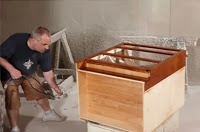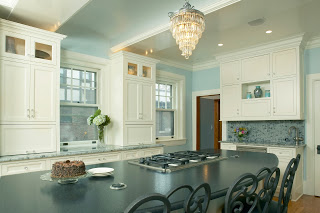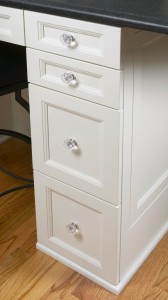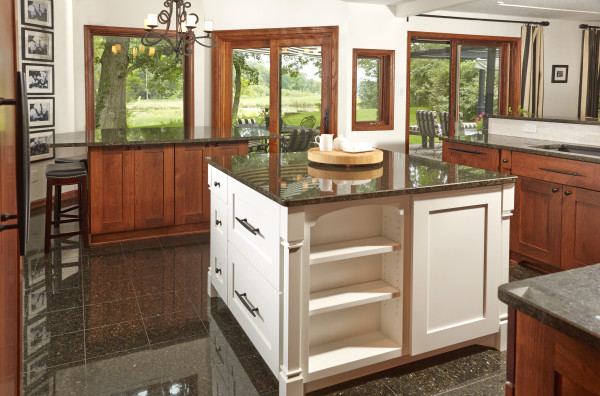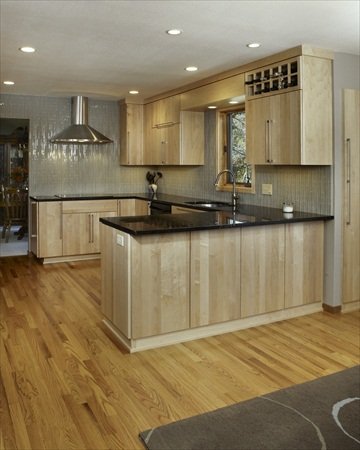You will probably want to choose a durable wood specie for your cabinetry if you expect it to receive a lot of wear and tear in your household. Just as important as the durability of the wood itself is the quality of the finish that is applied to it. In the following paragraphs I present a very broad overview of the most common finishes for kitchen cabinets. While there are many, many finish materials and options, and just as many opinions on what produces the best finish, the two best finishes for kitchen cabinets are catalyzed lacquer and conversion varnish. First, let’s talk about lacquer. Whether water-based or catalyzed, lacquer makes a beautiful and smooth cabinet finish, but some common lacquer products (such as nitrocellulose) may not have long term water resistance. Over time, the finish can yellow, crack, and break down in those areas where water drips have been left to dry: most frequently, the front of the sink cabinet and the baseboards, base shoe, window sills, etc. Catalyzedlacquer will have very good water resistance because it involves a chemical reaction that results in a tough and durable finish. However, varnishsurpasses most other finishes in its resistance to water, heat, solvents and other chemicals. Conversion varnish takes a skilled person to apply it evenly. Most manufactured cabinets have a conversion varnish finish and many of these larger companies apply the finish using complex mechanical spraying machines that are calibrated to apply the finish at just the right thickness. In smaller cabinet shops, they use a spray booth where the finish is sprayed on by a skilled technician. This photo shows our cabinet finisher working in a spray booth, applying conversion varnish to a stained cabinet.
